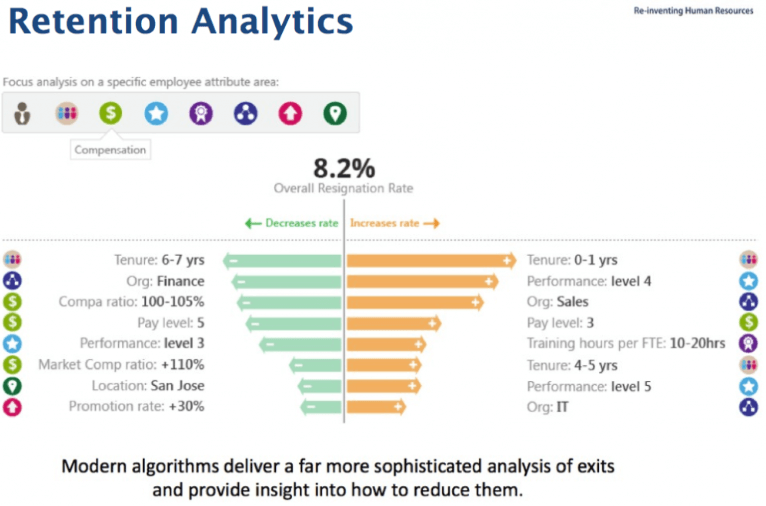Employees resigning and retention rates are a common KPI of most HR departments. We all know why we use this measurement. Retention of good talent is one of the highest priorities for every business.
The question posed by senior management is generally, ‘How can we decrease the number of employees resigning?’ The real question HR needs to ask is, ‘Why are we losing this talent in the first place?’
How to determine why employees resign
Workforce analytics can help us answer this question (and the variety of underlying questions that follow) by searching for areas of causation. It’s important to look for causation, not correlation, because it’s not enough to know ‘higher paid employees have a high turnover rate’ – we need to know if higher paid employees have a higher turnover rate because they are higher paid employees. The ‘why’ is the most important part of the equation.
The best way to do this is to use analysis that combines all measurable factors into the equation, to help define the most probable root cause for a situation.
As an example, we’ll use the results generated by Workforce Analytics tool, Visier, for Marin Company, an example company with some issues with their employees resigning.

1. Tenure
For Marin, we can see that the number 1 reason why employees resign is because they’re within their first year. This is common to many businesses, and is generally a sign that the hiring process isn’t necessarily finding the right people for the job, or that the induction process is not as effective as it should be.
2. Performance
If you’re only losing low performance employees, perhaps your high employee turnover is a good sign! In our case, we can see that high performers (level 4 and 5, with 1 being poor and 5 being exceptional performance) are more likely to leave the organisation. This is a serious problem, and could be related to career development (backing this up, promotion rate of +30% does seem to decrease the chance of turnover), the level of challenge the employee is presented with in their role, or even non-financial rewards.
Interestingly, those performing at level 3 are more likely to stay with our organisation. Perhaps Marin are rewarding the wrong sorts of employees?
3. Business unit
At Marin, like many businesses, we can see that the sales team experiences higher turnover than the rest of the business. Whilst this is hard to completely mitigate, it could potentially highlight problems with the team dynamics within the sales team. Similarly, the IT department seems to have higher turnover which requires further scrutiny.
On the other hand, the finance team seems to be exceptional at retaining employees. There may be opportunities to learn from the dynamics of this team to improve retention in other business units.
4. Pay level
Perhaps unsurprisingly, a high pay grade (5) decreases the chance of employees resigning, whilst a middle pay grade (3) increases the chance of resignation. This is also reflected in the positive affect high compa rates have on employee retention. In short, at Marin, high pay decreases the chance of an employee resigning. Of course, it’s not practical to just increase everyone’s pay – but perhaps we’d be better off reducing the pay of those level 3 performers to reallocate those resources to the level 4 and 5 performers.
5. Amount of training provided
We’d usually expect that more training would decrease the chance of employees resigning. At Marin, that’s not necessarily the case, but what we do know is that a low level of training (10-20 hours per FTE) does increase the likelihood of turnover. Potentially, increasing this amount of training slightly could reduce the employee retention rate.
As you can probably tell, this analysis has led to more questions than answers. How do we incentivise the high performers? How much training is the ideal amount to provide? The beauty of workforce analytics is that we can follow these questions right through to find these answers. From there, we can create forecasts and potential scenarios to make good decisions based on good data.



